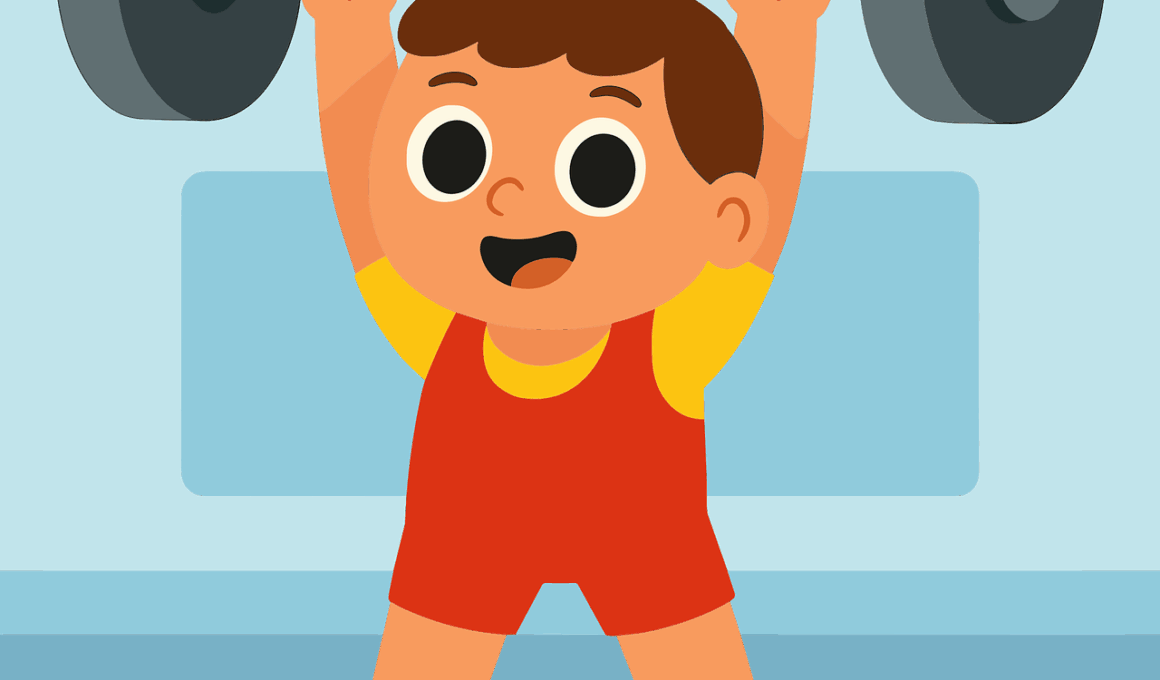Benefits of Cardiovascular Training for Kids and Teens
Cardiovascular training is essential for promoting a healthy lifestyle among children and adolescents. It’s a key aspect of fitness that helps enhance heart health, stamina, and overall well-being. Engaging in cardiovascular activities like running, swimming, and cycling makes the heart more efficient in pumping blood and oxygen throughout the body. This training reduces the risk of developing cardiovascular diseases later in life. Regular exercise not only strengthens the heart but also improves respiratory function, enabling kids to breathe better during physical activities. Cardiovascular workouts are effective in managing weight, promoting healthy body composition. They help in burning calories and reducing body fat, which is particularly important in combating obesity among young people. Social interaction is another benefit, as kids can engage in group sports or activities, fostering teamwork and camaraderie. Also, cardiovascular training contributes significantly to mental health, aiding in reducing anxiety and stress levels. Kids involved in regular physical activities have shown better academic performance as well. Ultimately, instilling a habit of cardiovascular exercise from a young age can cultivate a lifelong commitment to fitness and health.
Beyond physical health, cardiovascular training significantly enhances mental well-being in children and teens. Research indicates that regular aerobic exercise boosts mood and decreases feelings of depression, anxiety, and stress. When kids engage in activities like jogging or playing soccer, their bodies release endorphins, often referred to as “feel-good” hormones. These endorphins contribute to feelings of happiness and relaxation, which are particularly beneficial for growing minds dealing with academic and social pressures. Moreover, cardiovascular fitness fosters better sleep patterns, allowing young individuals to rest adequately. Sleep is paramount for development and cognitive function, and regular exercise promotes deeper sleep cycles. Also, kids involved in cardio activities demonstrate improved focus and concentration in school settings. Enhanced blood flow and oxygenation to the brain can lead to improved academic performance overall. Additionally, cardiovascular training can help develop a sense of accomplishment and boost self-esteem in children. As they set fitness goals and achieve them, kids gain confidence. Encouraging them to participate in group exercises or sports helps them build friendships and social skills, further enhancing their emotional health and societal interactions.
The Role of Parents in Cardiovascular Fitness
Parents play a crucial role in introducing and maintaining cardiovascular training in their children’s lives. By promoting active family outings, such as weekend hikes or biking trips, parents set a positive example. Involving family members in fitness activities creates a supportive environment where children feel encouraged to pursue exercise regularly. Importantly, parents should prioritize and allocate time for physical activities, showcasing that fitness is an essential family value. Encouraging kids to join local sports teams can foster a sense of community while instilling the benefits of teamwork and cooperation. It’s beneficial to expose children to various activities so they can discover what captivates them the most. Besides organized sports, casual activities such as dancing, or brisk walking can be effective. Creating a regular schedule for physical activity not only reinforces its importance but also establishes healthy routines. Moreover, engaging in conversations about the benefits of cardiovascular exercise can motivate teens to appreciate its significance. It’s also vital for parents to celebrate their kids’ achievements in fitness, regardless of size. By doing so, children will feel motivated to continue their journey toward a healthier lifestyle.
The benefits of cardiovascular training extend beyond physical and mental health; they also encompass social skills development in kids and teens. Participation in group sports and activities can teach essential life skills such as teamwork and communication. Children learn to collaborate to achieve common goals, enhancing their interpersonal skills. This process can be crucial in building friendships and connections among peers. Additionally, group activities often foster a competitive spirit, which can lead to personal growth and resilience. The ability to deal with both victories and defeats teaches valuable lessons about sportsmanship and perseverance. These social interactions contribute positively to their emotional intelligence. Engaging with diverse teams promotes inclusiveness, as children learn to work with peers from varied backgrounds. Regular cardiovascular training also helps children develop a sense of discipline and responsibility, as they commit to their teams or workout schedules. The habit of regularly attending training sessions fosters accountability. Long-term involvement in cardio-based activities leads to improved self-regulation skills, which can translate into academic success. Ultimately, both fitness and social opportunities contribute to well-rounded individuals capable of contributing positively to their communities.
The Different Types of Cardiovascular Activities
There is a wide array of cardiovascular training activities that kids and teens can participate in, catering to various preferences. Traditional options include running, swimming, and cycling. Each of these activities can be adapted to suit different skill levels, making them accessible for everyone. Swimming, for instance, provides a full-body workout that’s low-impact and highly engaging, perfect for all ages. Additionally, team sports such as basketball, soccer, and volleyball not only provide excellent cardiovascular exercise but also promote teamwork and social interaction. Dance classes and martial arts offer fun alternative workouts that encourage rhythm, coordination, and self-expression. Approaching fitness through enjoyable activities is crucial in fostering a lifelong love for exercise. Schools often include programs that emphasize the importance of regular physical activity, allowing students to discover new interests like cross-country running or fitness challenges. Outdoor adventures such as hiking, rock climbing, and trail running offer cardiovascular benefits while allowing children to connect with nature. This connection can instill a sense of environmental responsibility. Ultimately, having varied options available ensures that kids and teens can find something they genuinely enjoy and wish to pursue.
To ensure children and teens have a positive experience with cardiovascular training, safety must always be a priority. Parents and guardians should educate themselves and their children about proper techniques to avoid injuries. Understanding the importance of warm-ups and cool-downs is essential, and should never be neglected. Age-appropriate activities and equipment go a long way in minimizing risks. Wearing proper footwear can significantly reduce the likelihood of injuries during sports or running activities. Hydration is a critical aspect of safety, especially during outdoor activities in warm weather. Children should be encouraged to drink water regularly before, during, and after exercises. It’s also vital for parents to listen to their children regarding fatigue or discomfort during workouts. Educating kids about recognizing their limits helps to instill responsible behavior in physical training. Furthermore, enrolling children in supervised programs led by trained instructors can enhance safety while providing valuable instruction and encouragement. Safety education builds confidence in kids, empowering them to engage in cardiovascular activities more freely. Ultimately, ensuring a safe exercise environment can lead to long-lasting active lifestyles for young individuals.
Long-term Impact of Cardiovascular Training
Emphasizing cardiovascular training during childhood can result in significant long-term health benefits. Instilling a love for physical activity early on sets a solid foundation for lifelong fitness habits. These habits reduce the risk of chronic diseases, including heart disease, diabetes, and obesity, which are becoming increasingly prevalent among youth today. Regular exercise from a young age ensures that children develop stronger muscles, bones, and joints, leading to better physical performance. Furthermore, engaging in cardiovascular training can positively affect cognitive abilities, boosting academic performance across subjects. As they continue their fitness journey into adulthood, individuals often remain active and prioritize health. Studies indicate that active children are more likely to become active adults, further improving their quality of life. Continued cardiovascular activity can promote longevity, ensuring that these individuals enjoy healthier, more fulfilling lives as seniors. Also, the social skills and emotional resilience learned through sports can aid in personal and professional relationships in adulthood. Creating an environment that fosters physical activity during childhood can shape a healthier society overall. This commitment to health provides benefits not just to the individual, but to families and communities alike.
In conclusion, incorporating cardiovascular training for kids and teens offers a plethora of benefits worth acknowledging. From physical health to mental well-being and social skills development, the impact is profound and extensive. As children learn to appreciate the importance of exercise, they foster a lifelong commitment to fitness. The skills they acquire through team sports and group activities lay down the foundation for resilience and healthy relationships. Parents play an integral role in promoting these habits, encouraging their children to stay active and engaged in diverse activities. The various types of cardiovascular training ensure that there is something enjoyable for everyone, minimizing the chances of disengagement. Additionally, prioritizing safety and proper techniques lays the groundwork for a positive experience in physical activity. Long-term benefits are seen as children transition into adulthood, establishing a healthier lifestyle with reduced disease risk. As a society, it’s crucial to promote the advantages of cardiovascular training, ensuring that younger generations understand its significance. With collective efforts, we can build a healthier future through active lifestyles, benefiting individuals, families, and communities on a grand scale.


